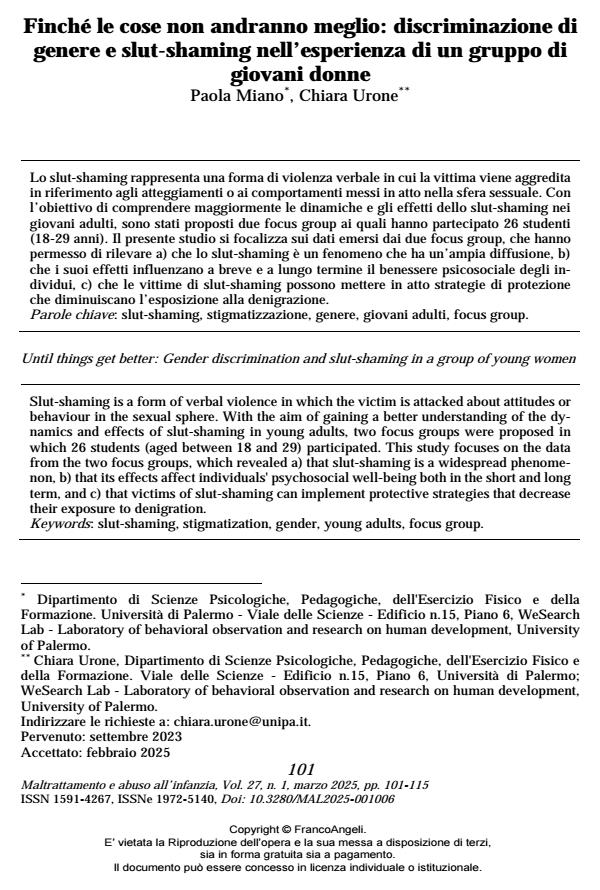Until things get better: Gender discrimination and slut-shaming in a group of young women
Journal title MALTRATTAMENTO E ABUSO ALL’INFANZIA
Author/s Paola Miano, Chiara Urone
Publishing Year 2025 Issue 2025/1
Language Italian Pages 15 P. 101-115 File size 65 KB
DOI 10.3280/MAL2025-001006
DOI is like a bar code for intellectual property: to have more infomation
click here
Below, you can see the article first page
If you want to buy this article in PDF format, you can do it, following the instructions to buy download credits

FrancoAngeli is member of Publishers International Linking Association, Inc (PILA), a not-for-profit association which run the CrossRef service enabling links to and from online scholarly content.
Slut-shaming is a form of verbal violence in which the victim is attacked about attitudes or behaviour in the sexual sphere. With the aim of gaining a better understanding of the dy-namics and effects of slut-shaming in young adults, two focus groups were proposed in which 26 students (aged between 18 and 29) participated. This study focuses on the data from the two focus groups, which revealed a) that slut-shaming is a widespread phenome-non, b) that its effects affect individuals' psychosocial well-being both in the short and long term, and c) that victims of slut-shaming can implement protective strategies that decrease their exposure to denigration.
Keywords: slut-shaming, stigmatization, gender, young adults, focus group.
Paola Miano, Chiara Urone, Finché le cose non andranno meglio: discriminazione di genere e slut-shaming nell’esperienza di un gruppo di giovani donne in "MALTRATTAMENTO E ABUSO ALL’INFANZIA" 1/2025, pp 101-115, DOI: 10.3280/MAL2025-001006